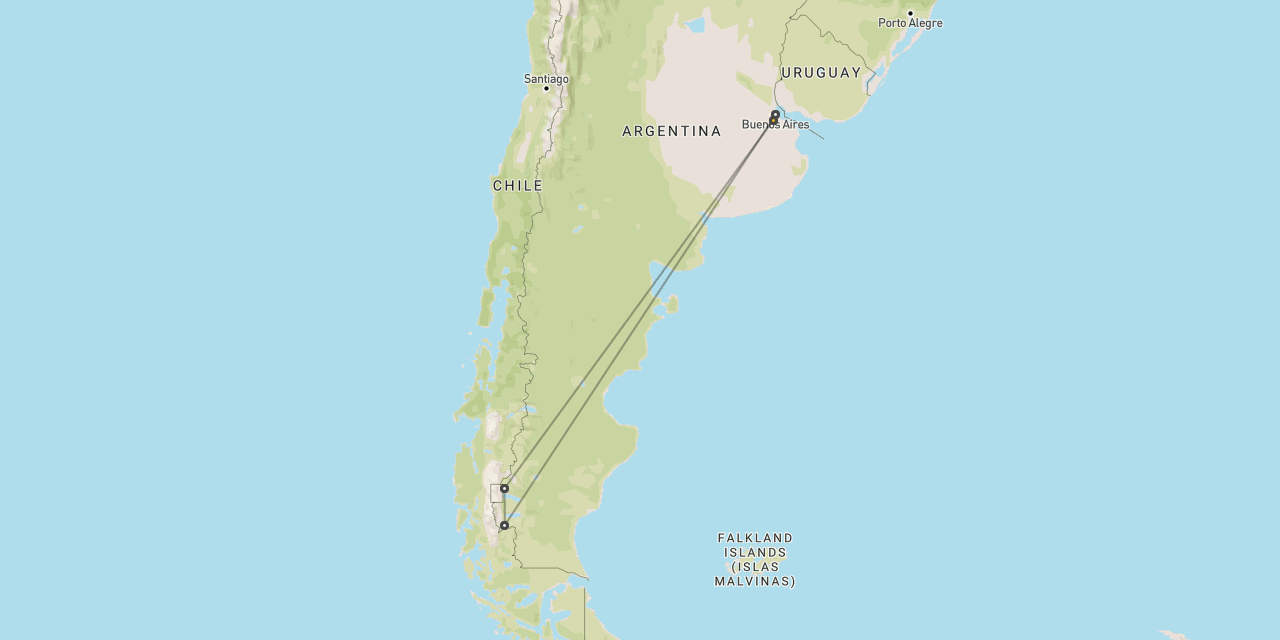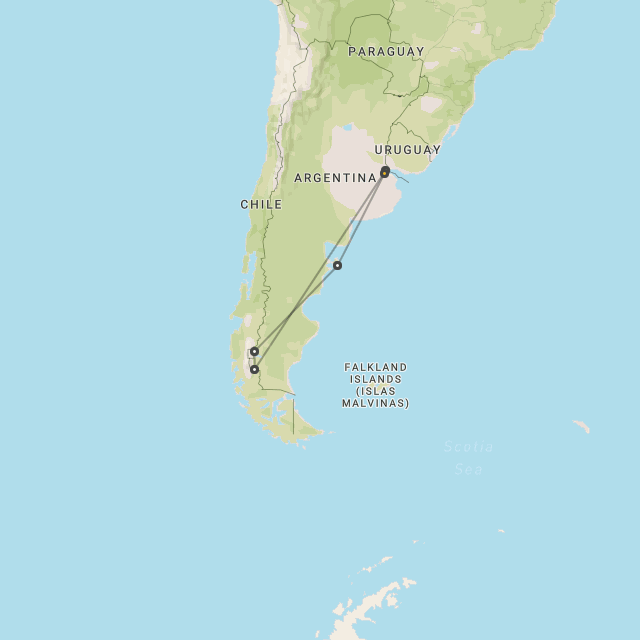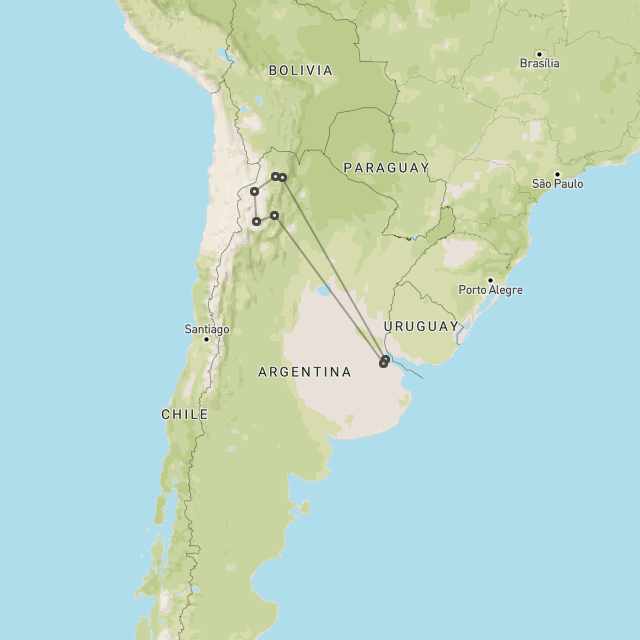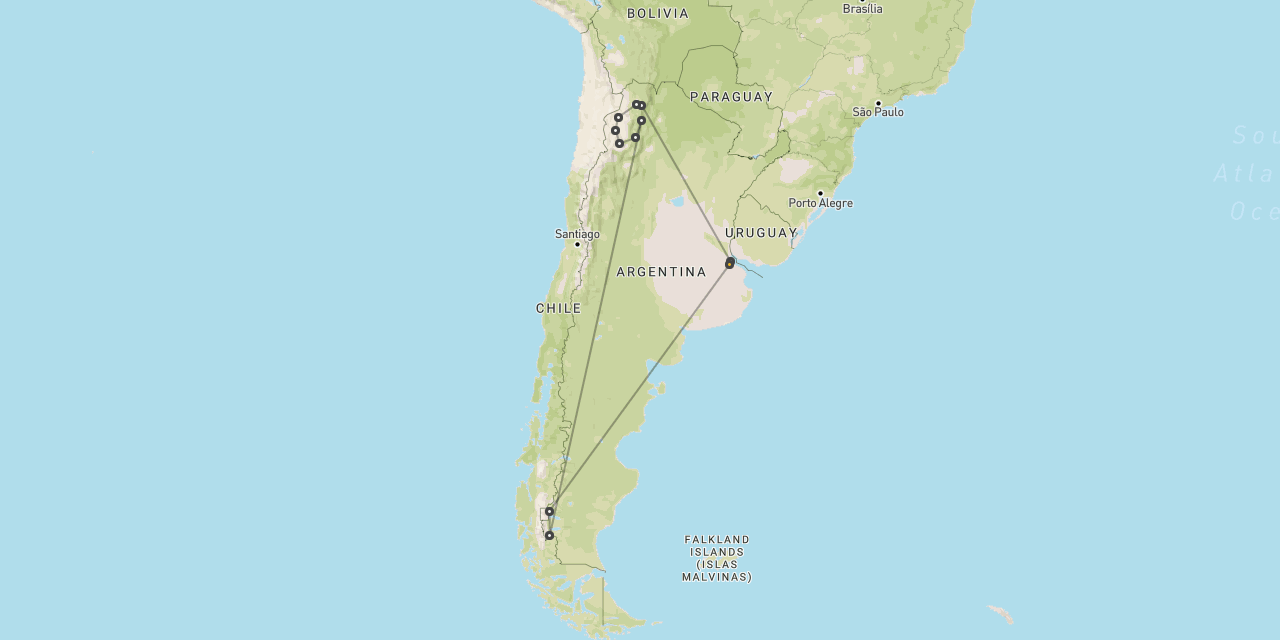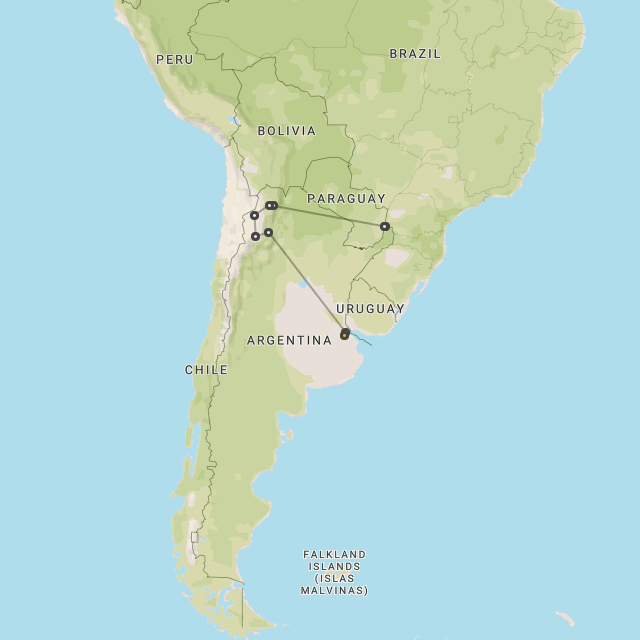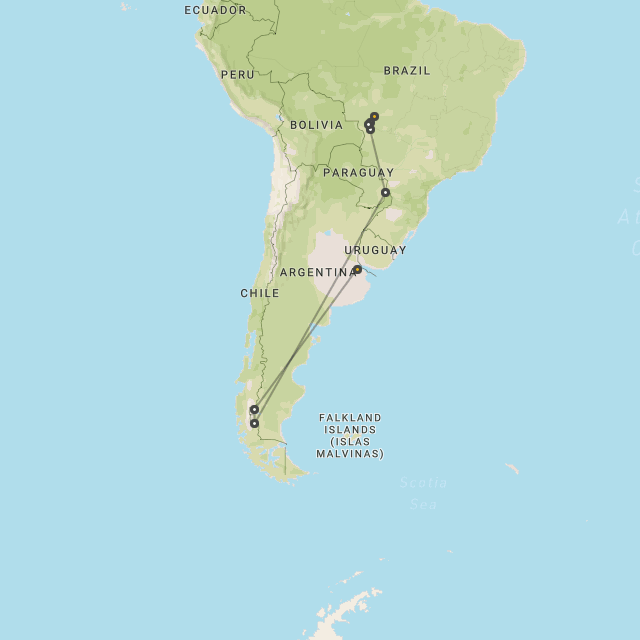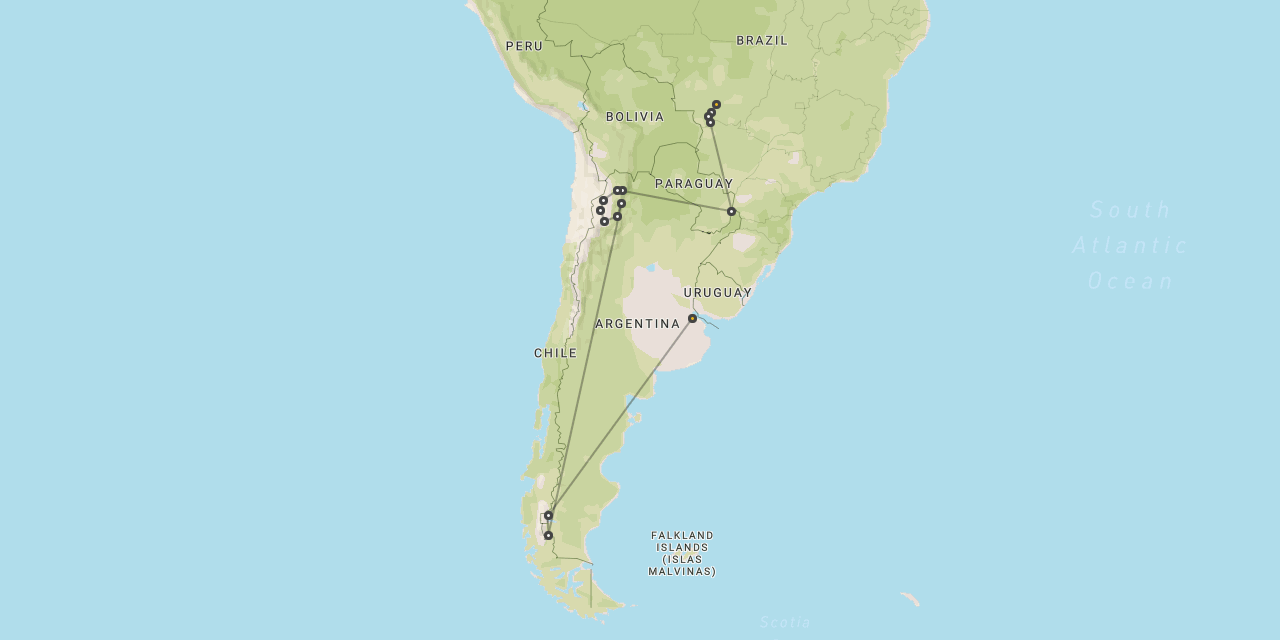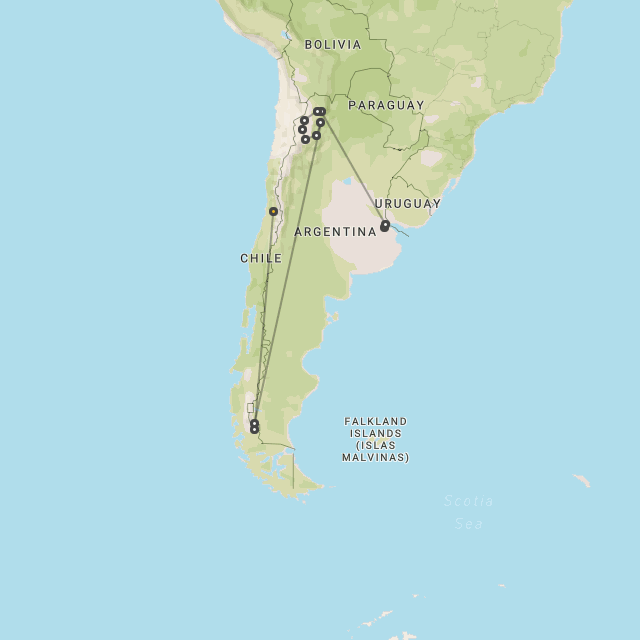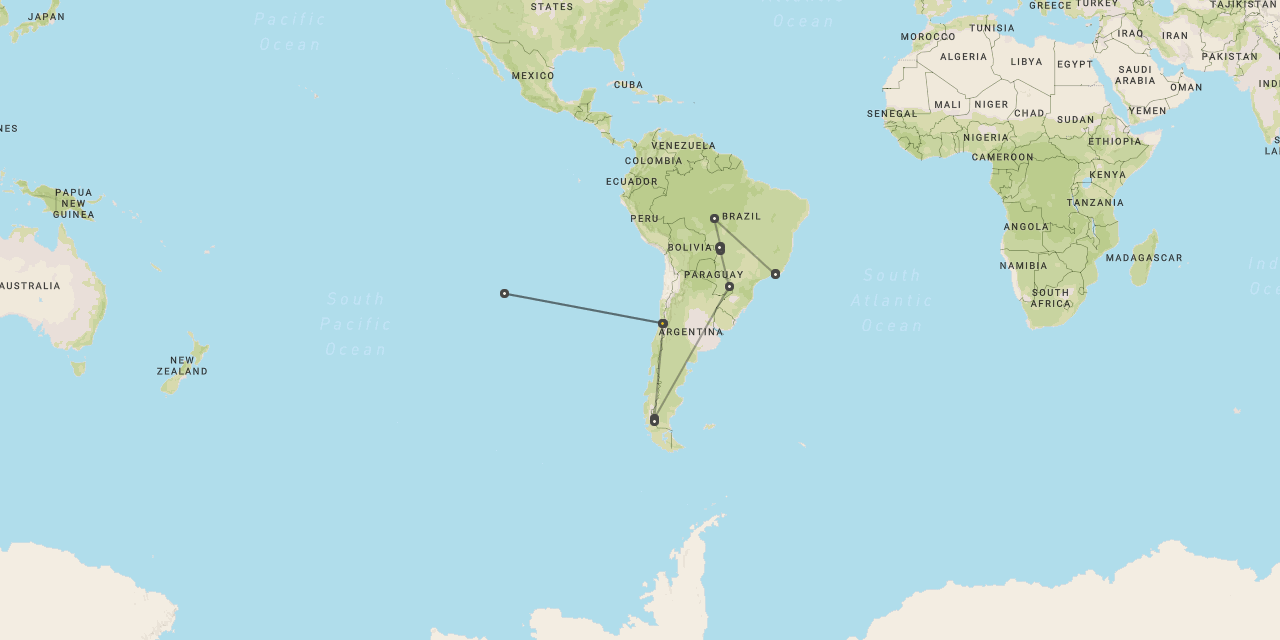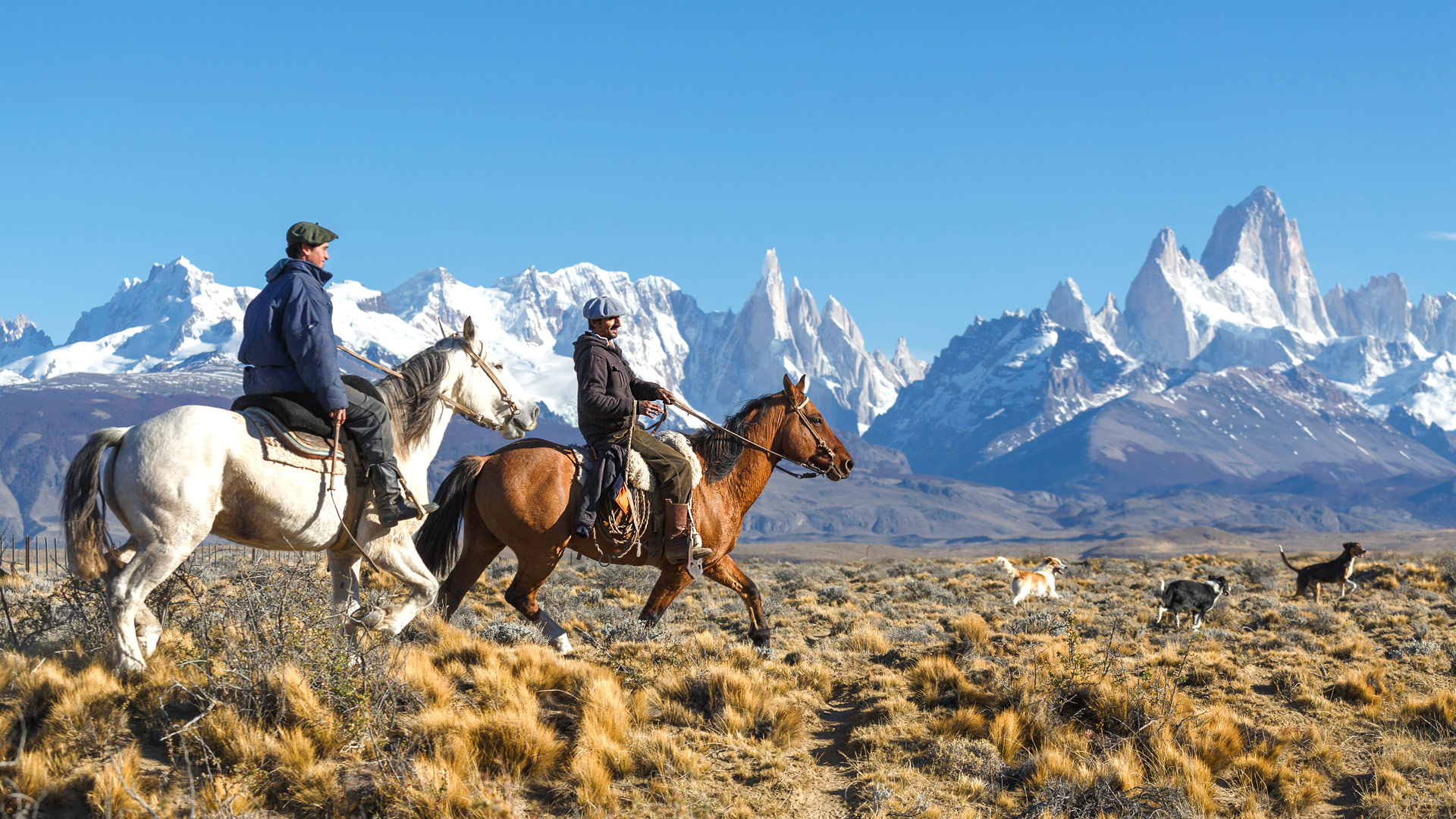
Safari to Los Glaciares
Los Glaciares
is the most impressive region
of Argentinian Patagonia
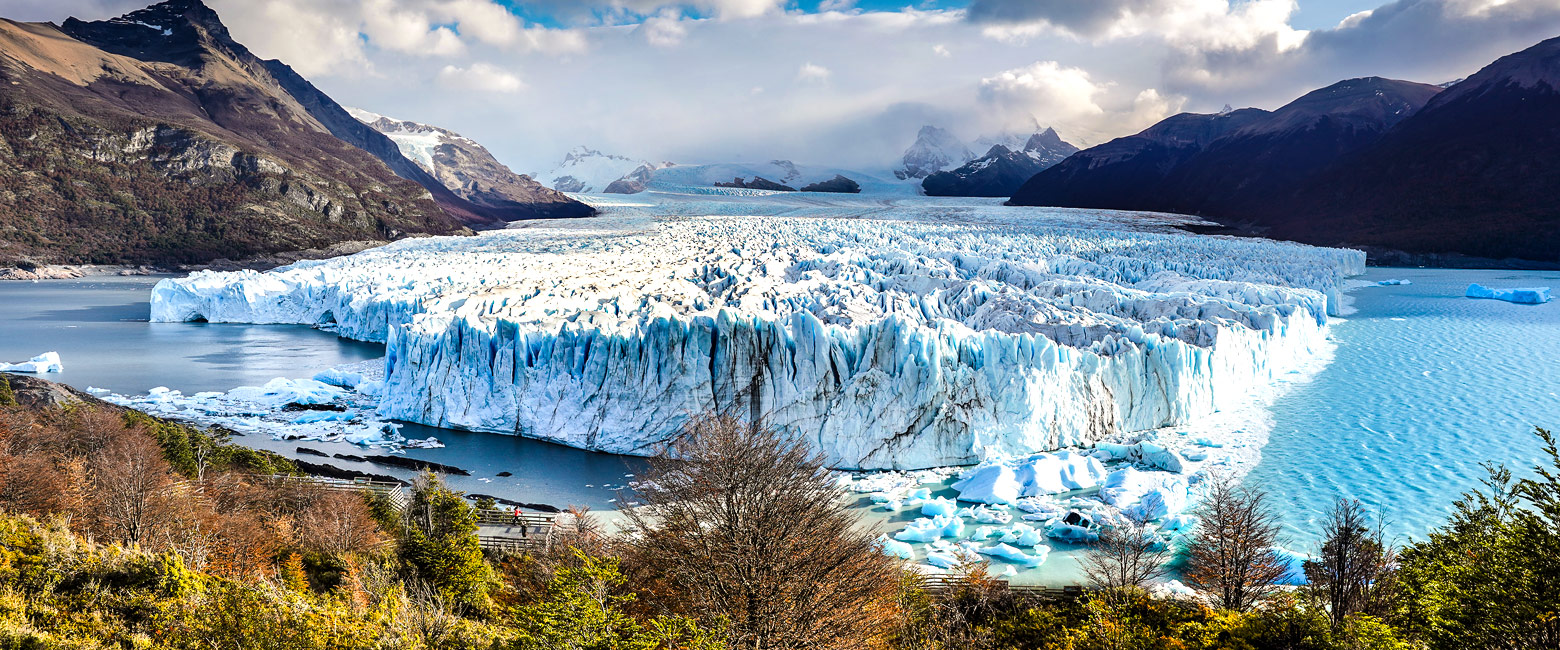
the prime location in southern Argentina
Set in the south of Argentina (within a greater area sometimes referred to as Patagonia), Los Glaciares is a national park which is renowned for its incredible scenery, dramatic mountain peaks and extremely impressive glaciers.
This substantial national park represents only a small portion of a network of reserves that covers much of this remarkable part of the continent.
At 7269 square kilometres (2806 square miles), Los Glaciares is a very substantial national park.The western side of the reserve is extremely mountainous and covered by the Southern Patagonian ice field. In fact 30% of the national park is covered by permanent ice.
Dozens of large glaciers run down from these peaks to meet three very large lakes, whose fingers extend westward into the mountains to meet them.
Beyond the ice field to the west lies a maze of inaccessible mountainous islands and fjords that front out onto the Antarctic Ocean.
To the east of the reserve the land is largely arid steppe, covered by rough grassland, a natural habitat for guanacos and pumas (although the wildlife is very much under pressure from domestic herds outside the national park).
In between these two areas lies a zone of Magellanic subpolar forests, mainly comprised of lenga and guindo trees, that are home to a much wider range of flora and fauna.
The primary point of access for visitors into the reserve is the town of El Calafate, which lies on the southern shore of Lago Argentino. From here it’s possible to drive to the enormous Glaciar Perito Moreno and to catch a boat out to Glaciar Upsala, Glacier Spegazzini and Bahía Onelli.
The smaller settlement of El Chalten lies about 150 km further north, in between Lago Viedma and Lago San Martin. The glaciers up this way may be slightly less impressive, but there are some epic hiking and trekking trails in the area, around the dramatic peaks of Mount Fitz Roy and Cerro Torre.
The primary activity in the reserve is travelling out to the various glaciers, either by road, by boat or on foot. They really are very impressive.
There’s also an extensive network of trails, which range from relatively easy day hikes, all the way up to epic multiple night trekking circuits.
Other activities in the area include horseback riding, white-water rafting and mountain-biking.
Los Glaciares contains a very interesting range of accommodation options, from large upmarket lodges to relatively simple and authentic locally-owned guest-farms.
Although many people just pop down here for a few nights in a wider trip around Argentina, it’s very easy to spend 10-14 nights in Patagonia alone. This area is most commonly combined with nights in Torres del Paine (across the border in Chile), as well as short cruises around Cape Horn or even down to Antarctica.
The best time of year to visit is generally considered to be over the Oct-Mar southern summer period, although we also appreciate the quieter and colder winter months.
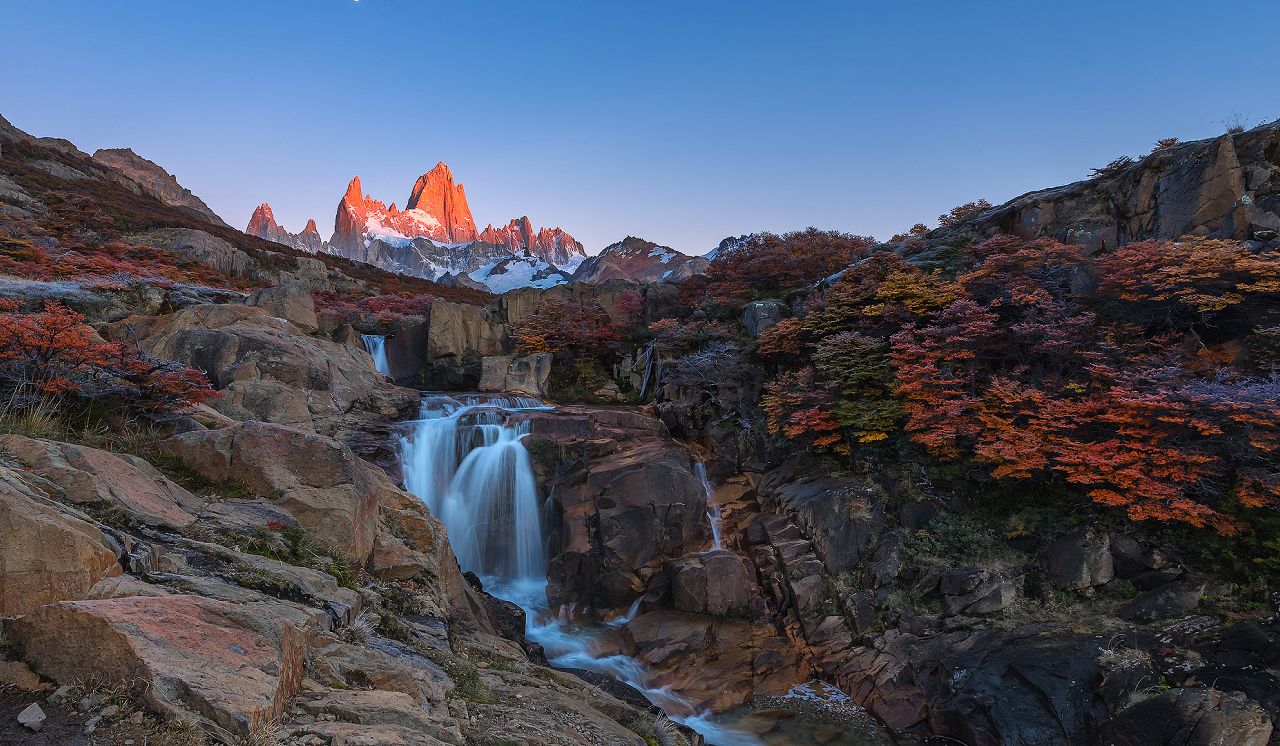
Gallery
Map
The best time to visit Los Glaciares is generally considered to be during the Oct-Mar southern spring-summer-autumn period.
Los Glaciares officially has a ‘cold semi-arid climate’, with two reasonably well-defined seasons …
During the Oct-Mar summer season the weather is cool and wet. Daytime temperatures usually struggle their way up to around 16C/61F, with nighttime lows holding up around 7C/45F. Rainfall during this period is only around 25mm (1”) per month. Sunshine is around 7-8 hours per day (around 50% of daylight hours, the summer days being very long this far south).
During the Apr-Sep winter season the conditions are significantly colder, but still reasonably dry. Daytime temperatures usually struggle up to around 6C/43F, with nighttime lows falling to around -1C/30F. The rainfall during this period is around 50mm (2”) per month, commonly falling as snow. Sunshine is down around 2-3 hours per day (around 40% of daylight hours, the winter days being very short this far south).
The vast majority of people visit during that Oct-Mar summer season. Personally we enjoy the off-season when, although the weather is colder and the days shorter, the blissful absence of strong winds (usually), coupled with the peacefulness of the area at this time can prove to be a winning formula. This is particularly true if you are keen to avoid the summer visitor traffic.
It also has to be said that the weather in this part of the world is notoriously changeable, you really can experience all four seasons in a single day, so you need to be ready for everything and allow extra time in your trip to ensure that you have the necessary flexibility.
Getting there
Los Glaciares is usually accessed by air from Buenos Aires into El Calafate Airport (FTE).
There are also direct flight connections from Bariloche (around 1000 km further north) and Ushuaia (700 km further south, down at the southern tip of the continent, which is the main jumping-off place for cruises to Antarctica).
It is also sometimes possible to connect directly with Almirante Marcos A Zar Airport (REW) in Trelew, for the Península Valdés.
The reserve is also often accessed by road from Torres del Paine National Park, which lies immediately to the south, across the border in Chile, which is in turn accessed by air from Santiago (SCL) into Punta Arenas (PUQ).
Where to stay
Choosing where to stay in Los Glaciares depends very much on the kinds of activities that you want to include …
If you specifically do not want to include seriously active hiking and horse-riding, then you can base yourself in the southern El Calafate area, which will provide access to Glaciar Perito Moreno and the boats that explore Lago Argentino. You may well consider a live-aboard cruise on the lake for a couple of nights.
If you are up for all kinds of active hiking and trekking options, then the best option for a shorter stay (3-4 nights) is usually Estancia Nibepo Aike, the only property which offers both access to the famous Glaciar Perito Moreno and hiking trails to some extremely remote and beautiful glacier valleys.
For an active longer stay (4-8 nights), then you might think about combining Estancia Nibepo Aike with a second lodge in the El Chalten area, such as Hosteria El Pilar, which provides you with access to the famous hiking trails in this northern area.
Finally, if you really want the full Patagonian pioneer experience, then you can hole up in one of the even more remote farmsteads for as long as you like, hiking, horse-riding, helping out on the farm or writing a book. Notable options include Estancia Helsingfors Lodge, Estancia La Maipu and Estancia El Condor.
best during the Nov-Mar southern summer
let us know your thoughts about Argentina
and we will help you create the perfect safari
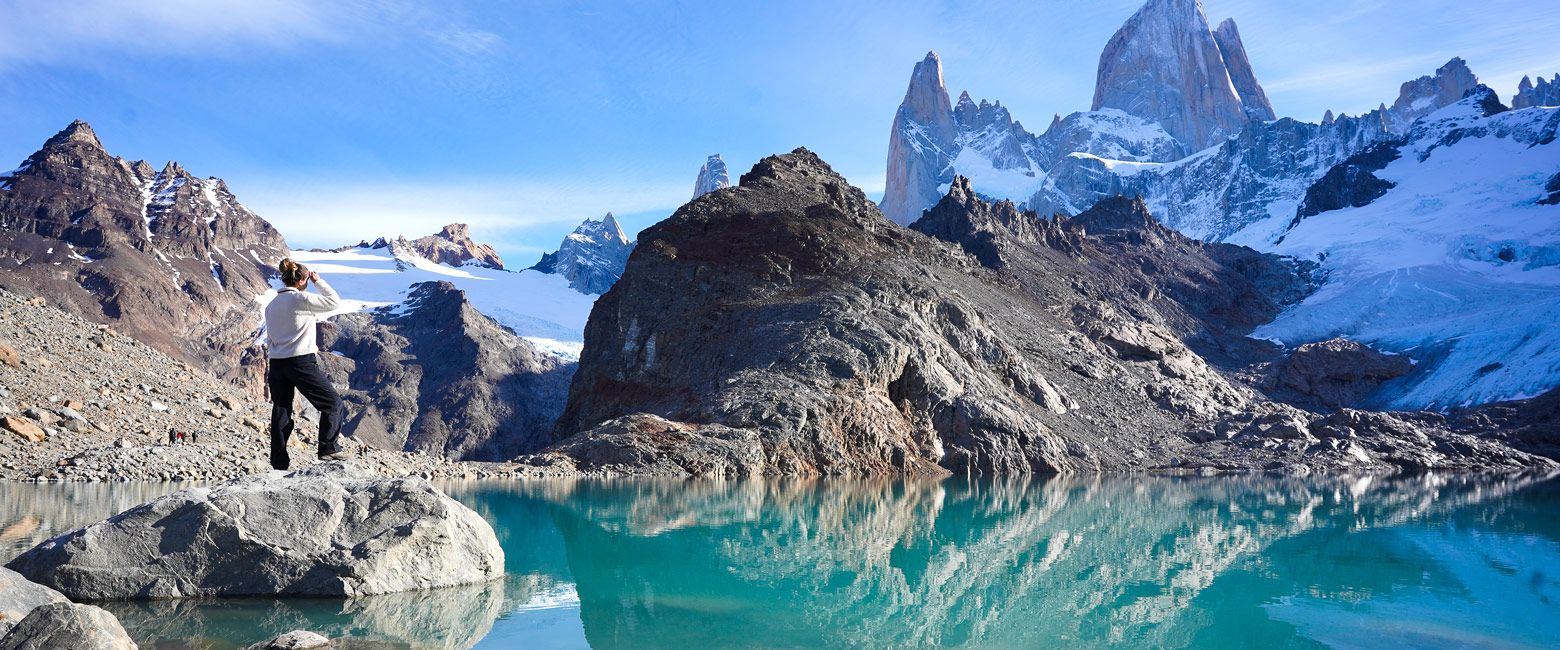
Extraordinary tailor-made adventures,
from earthy and edgy to easy and extravagant
From around USD 2500 per person, you set the ceiling
Sample Trips
Here are some of our popular trip shapes

Get started on your trip
It’s never too soon to get in touch, we are here to help with every stage of your planning.
Best Lodges
We regularly inspect and photograph all of the the best lodges, to ensure that we always recommend the most suitable options
Key Locations
Take a look around related locations. Click ‘View more’ to explore locations further afield.
Where Next?
Where Next?
We offer trips to dozens of fabulous countries.
Might one of these might be your next great adventure?

Please rotate your screen.






























